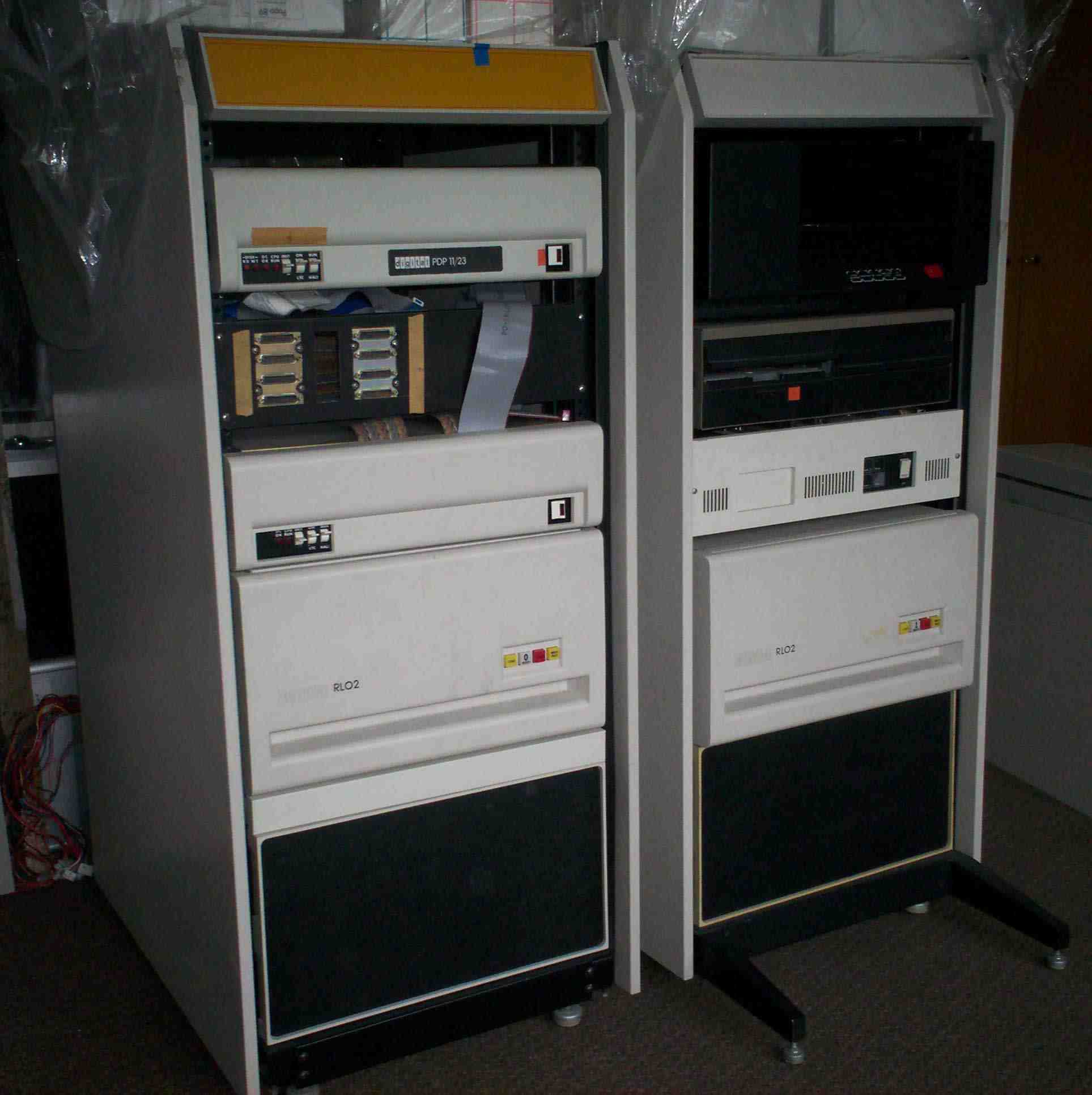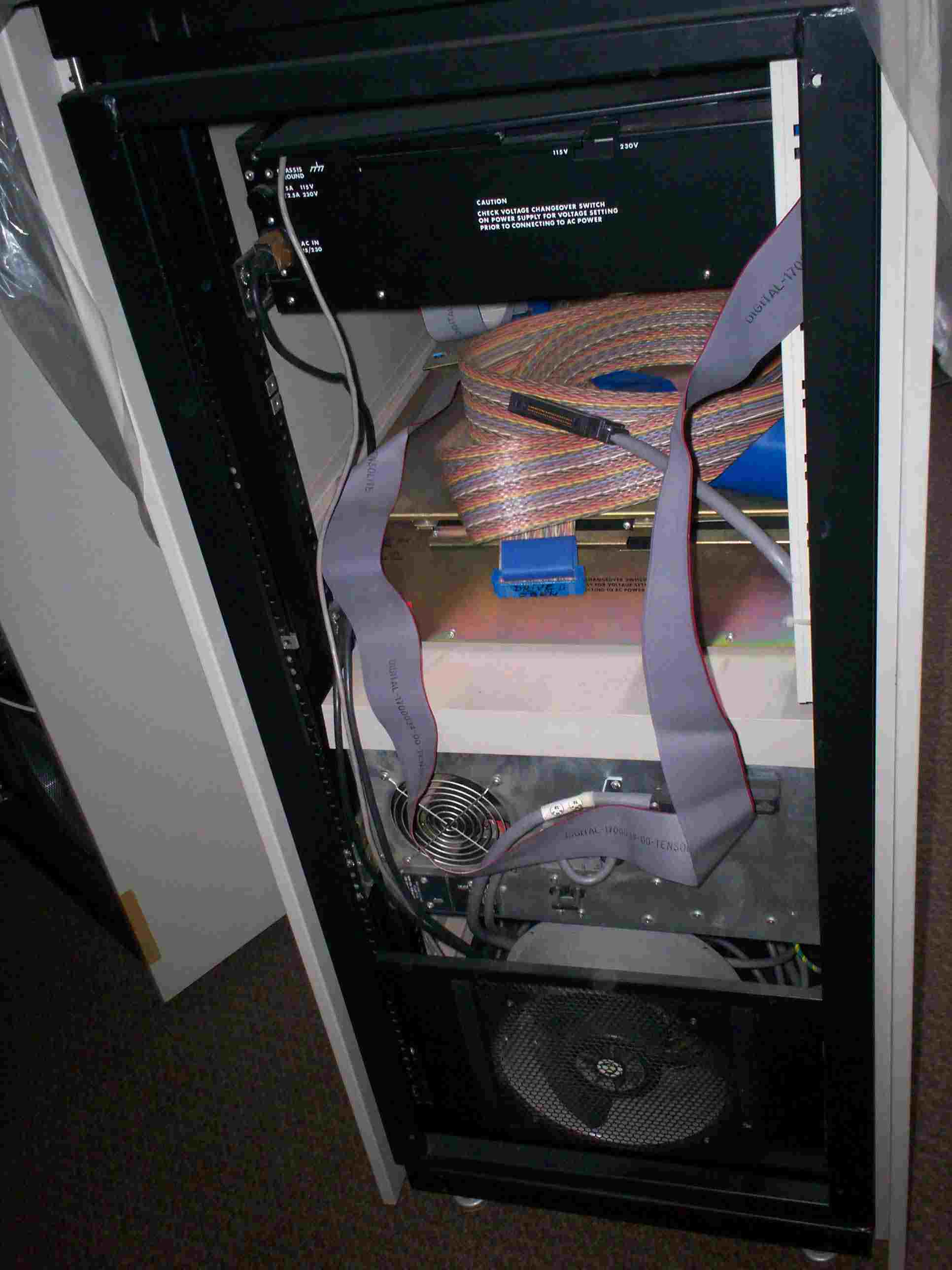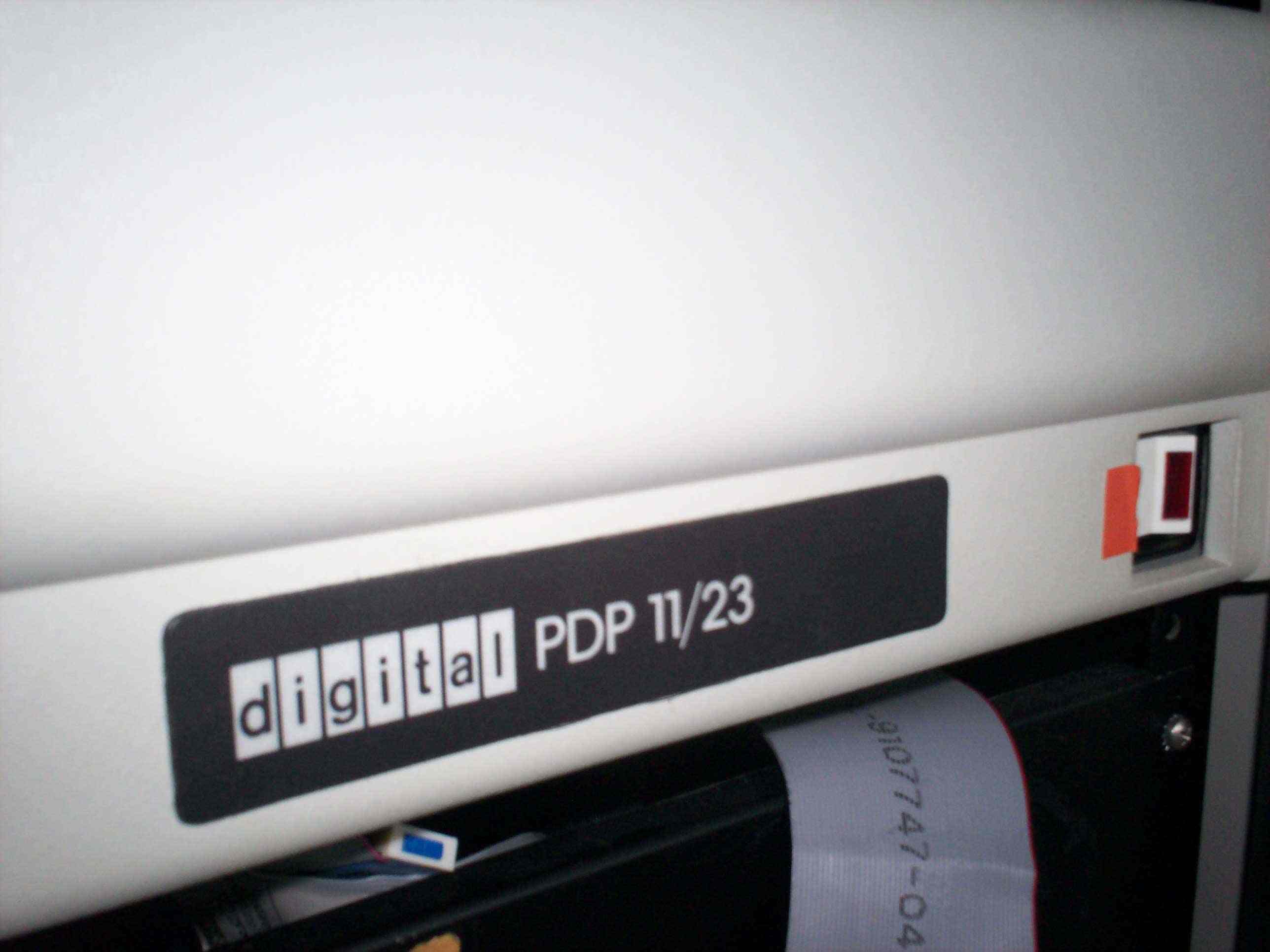Story:
Saving and collecting larger systems in fact began with this very PDP 11/73. This system came via ebay and I really didn't know what was waiting for me since the seller didn't upload any photos. Well, it was quite a surprise when we went down the cave of the building in which the PDP was installed in order to inspect what I finaly got. My first thoughts were: "Damn, I'll have to come back in order to take the rest." ... and we came with a big car already! Qbus-based PDP-11 systems not often came in configurations needing more than one cabinet. In addition to the two cabinets, two dozen of RL02 disk packs and many boxes of 8" floppies and reel tapes were available. When I picked up this system, I only had very little knowledge about DEC PDP mini-computers which changed with that 11/73.
This system worked in a small engineering company for almost 20 years! It was used in the year 1999/2000. Originally, the system had been equipped with a 11/23 CPU board (as the logo says), but it was upgraded later on with a 11/73 CPU board. The system comes with a lot of peripherals:
Two RL02 drives, one Fujitsu M2312K SMD hard
disk drive (87MB), two 8'' floppy drives, a Cipher F880 reel
tape drive and a DHV11 communications controller in order to
connect 8 terminals.
The operating system installed is RSX-11M Plus.
The second 11/73 system has been built up by myself. I got the KDJ11 board from the nuclear physics institute of my university. So I built up another 11/73 system in a BA23 enclosure for testing purposes.







